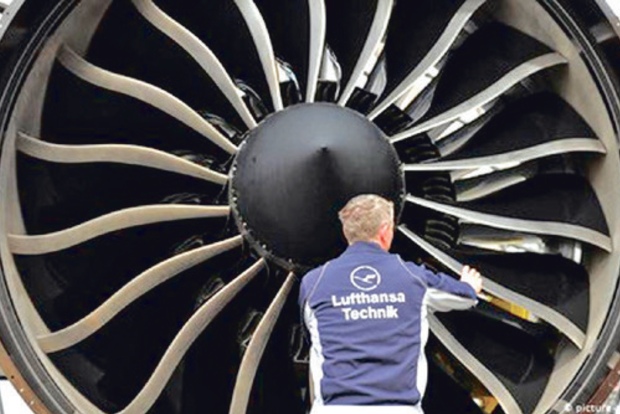Begin typing your search...
CONTINGENCY PLANS: Danger lurking under an aircraft’s wings
Two jet engine explosions in one day point to potential dangers underneath the wings of aircraft. But planes must be capable of withstanding such damage.

Chennai
The long fan blades are made of titanium, the hardest metal available. The funnel-like blades let as much air as possible — as efficiently as possible — into the turbine, where it gets heated up, creating propulsion.
In some engine types, the fan blades are hollow inside with a view to saving weight. The tips of the fan blades, usually between 22 and 38 per engine depending on the class of aircraft, rotate with supersonic speeds inside the inlets. Especially on takeoff, such huge high-tech propulsion devices for wide-body aircraft run at full throttle to lift off aircraft weights of 250 tons or more.
It was during this most critical phase of the flight that two incidents happened on Saturday, one in Europe and the other in the United States.
Broken blades
Initially, a 30-year-old Boeing 747-400 freighter took off from Maastricht in the Netherlands for a flight to New York. It had just become airborne when an explosion occurred on the outer left engine. Broken blades from one of the compressors flew out of the back, slightly injuring an elderly woman and a child on the ground. Worse things could easily have happened as the sharp-edged metal pieces punctured parked cars in the suburb of Meerssen like knives coming down from the sky. The PW4056 engine in question was manufactured by Pratt & Whitney in the United States, one of the leading global aircraft jet engine suppliers. Developed in the mid-1980s, the PW4000 family is one of the principal types for airliner propulsion.
Development, testing and certification for commercial operations are done by the engine manufacturers, not the aircraft suppliers. Viewing the incidents as a specific Boeing problem would therefore be misleading, though such events always taint the aircraft manufacturer’s image, too. That’s especially the case when two such rare incidents occur on the same day, both involving Boeing aircraft, with dramatic photos and video footage of the incidents shared instantly all over the globe via social media.
On Saturday afternoon local time, United Airlines flight UA328 took off from Denver to Honolulu, Hawaii. Shortly after takeoff, the right PW4077 engine by Pratt & Whitney failed and exploded. The huge, ring-like engine inlet with a diameter of over three meters (10 feet) then plummeted to the ground, landing in a front yard in a Denver suburb. Luckily, no one was injured. Video footage shows metal parts of the engine cowling floating to the ground menacingly before landing next to a soccer field, again without causing any damage.
The US Federal Aviation Administration, as well as the Japanese and Korean authorities, have now effectively grounded aircraft with this engine, ordering more intense inspections on Sunday. “The inspection interval should be stepped up for the hollow fan blades that are unique to this model of engine, used solely on Boeing 777 airplanes,” FAA Administrator Steve Dickson said. In addition to the US’s United, only Japan Airlines and ANA in Japan and Korean Air in South Korea operate the affected version of the 777. At last count, 69 were still in active service, while 59 had been parked during the pandemic. Currently none of those is allowed to fly anymore, and it can be expected that the decline in traffic demand because of the coronavirus pandemic will result in many of them being permanently withdrawn from service.
This article was provided by Deutsche Welle
Visit news.dtnext.in to explore our interactive epaper!
Download the DT Next app for more exciting features!
Click here for iOS
Click here for Android
Next Story



